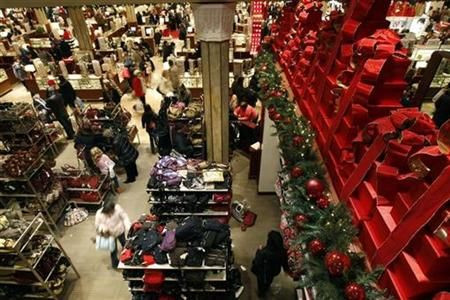US retail sales rose in November

U.S. retail sales continued to rise in November for the fifth month, boosted by holiday shopping as well as fuel prices, the U.S. Commerce Department said.
Retail sales in November rose 0.8 percent to $378.7 billion from October. It was up 7.7 percent from the same period last year. Sales in October were revised up 1.7 percent from the previously-reported 1.2 percent.
Excluding sales of motor vehicles and parts, retail sales rose 1.2 percent, indicating that the U.S. consumer market was seeing some signs of recovery.
Economists on average were expecting a rise of 0.6 percent during the month.
The Thanksgiving weekend in November, traditionally noted as the beginning of the holiday season, saw solid sales this year.
However, concerns remained that Black Friday and Cyber Monday would be the high point of the holiday season, as some economists expect people to close up their wallets after the month.
Gasoline prices saw a 4 percent rise during the month, followed by non-store retailers, who saw sales rise by 2 percent.
Sales of motor vehicles, however, dipped during the month, along with a marginal drop in electronics and appliances.
Core retail sales rose 0.9 percent from October. Core sales are considered a more accurate indicator of consumer sales as they ignore the most variable components of consumer spending - fuel, autos and building materials.
Consumer spending forms about 70 percent of GDP growth in the U.S. low consumer confidence, further aggravated by the weak dollar and an uncertain job prospects have kept sales muted for much of the first half of 2010.
Even if sales growth was a bit softer in December, annualized real consumption in the fourth quarter could even be as strong as 4 percent, up from 2.8 percent in the third quarter, Paul Dales, an economist at Capital Economics, said in a note.
If the proposed payroll tax cut makes it into law, consumption growth could be fairly good in the first quarter of next year too, he added.
The rise in consumer spending might not be enough to convince the U.S. Federal Reserve to refrain from completing the $600 billion bond purchase, announced in November. The quantitative easing has weakened the U.S. dollar further and some critics state that it has not helped the U.S. economy as much as expected.
The Boston Fed's Chairman expects the QE2, as it is popularly known, to add about 700,000 jobs to the economy, or reduce the unemployment rate by half a percentage point, by 2012.
However, some economists believe that the rate at which jobs are being created is not enough to offset the high rate of unemployment.
The rate of growth seen in retail sales cannot be sustained with tepid job growth, which means real incomes are rising at an annualized rate of less than 1 percent, Dales said.
This tentative consumer revival may therefore not be the start of a prolonged period in which households become the engine of the economy once again, he added.
© Copyright IBTimes 2025. All rights reserved.





















